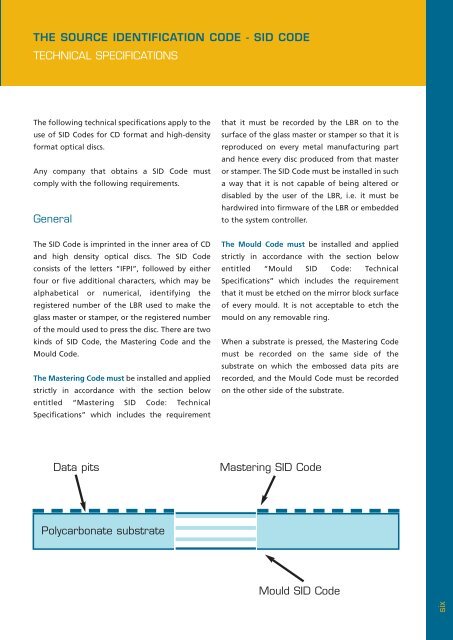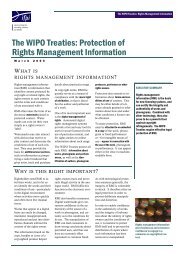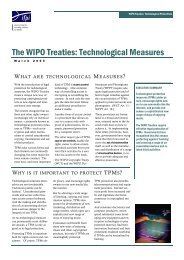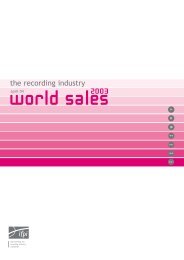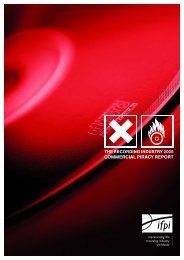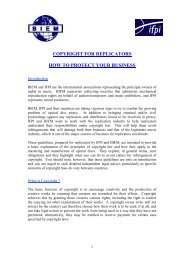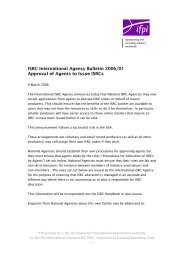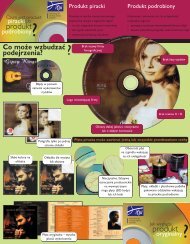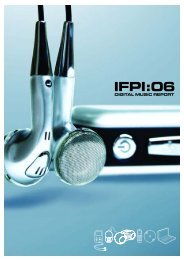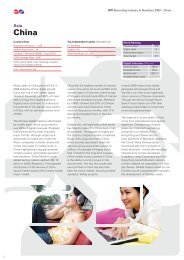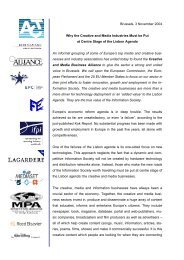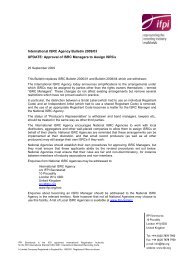SID CODE implementation guide - IFPI
SID CODE implementation guide - IFPI
SID CODE implementation guide - IFPI
You also want an ePaper? Increase the reach of your titles
YUMPU automatically turns print PDFs into web optimized ePapers that Google loves.
THE SOURCE IDENTIFICATION <strong>CODE</strong> - <strong>SID</strong> <strong>CODE</strong><br />
TECHNICAL SPECIFICATIONS<br />
The following technical specifications apply to the<br />
use of <strong>SID</strong> Codes for CD format and high-density<br />
format optical discs.<br />
Any company that obtains a <strong>SID</strong> Code must<br />
comply with the following requirements.<br />
General<br />
that it must be recorded by the LBR on to the<br />
surface of the glass master or stamper so that it is<br />
reproduced on every metal manufacturing part<br />
and hence every disc produced from that master<br />
or stamper. The <strong>SID</strong> Code must be installed in such<br />
a way that it is not capable of being altered or<br />
disabled by the user of the LBR, i.e. it must be<br />
hardwired into firmware of the LBR or embedded<br />
to the system controller.<br />
The <strong>SID</strong> Code is imprinted in the inner area of CD<br />
and high density optical discs. The <strong>SID</strong> Code<br />
consists of the letters “<strong>IFPI</strong>”, followed by either<br />
four or five additional characters, which may be<br />
alphabetical or numerical, identifying the<br />
registered number of the LBR used to make the<br />
glass master or stamper, or the registered number<br />
of the mould used to press the disc. There are two<br />
kinds of <strong>SID</strong> Code, the Mastering Code and the<br />
Mould Code.<br />
The Mastering Code must be installed and applied<br />
strictly in accordance with the section below<br />
entitled “Mastering <strong>SID</strong> Code: Technical<br />
Specifications” which includes the requirement<br />
The Mould Code must be installed and applied<br />
strictly in accordance with the section below<br />
entitled “Mould <strong>SID</strong> Code: Technical<br />
Specifications” which includes the requirement<br />
that it must be etched on the mirror block surface<br />
of every mould. It is not acceptable to etch the<br />
mould on any removable ring.<br />
When a substrate is pressed, the Mastering Code<br />
must be recorded on the same side of the<br />
substrate on which the embossed data pits are<br />
recorded, and the Mould Code must be recorded<br />
on the other side of the substrate.<br />
Data pits<br />
Mastering <strong>SID</strong> Code<br />
Polycarbonate substrate<br />
Mould <strong>SID</strong> Code<br />
six


